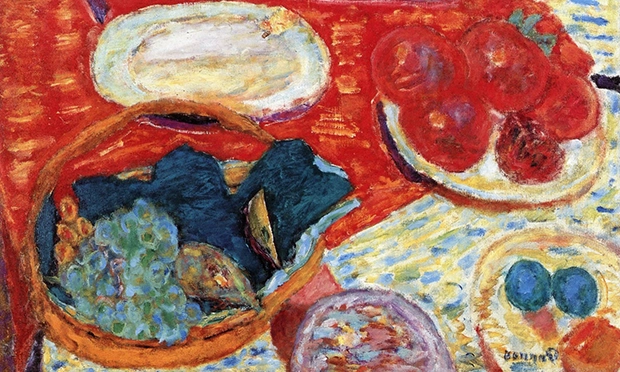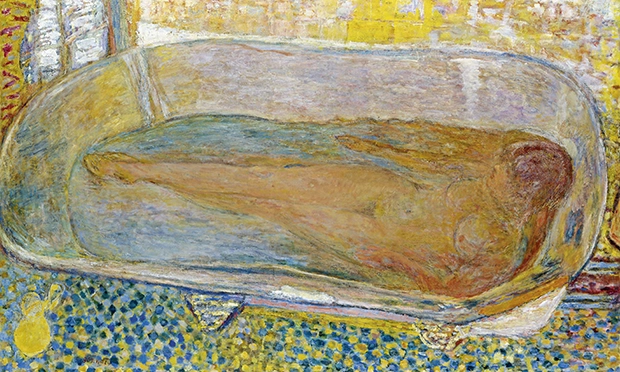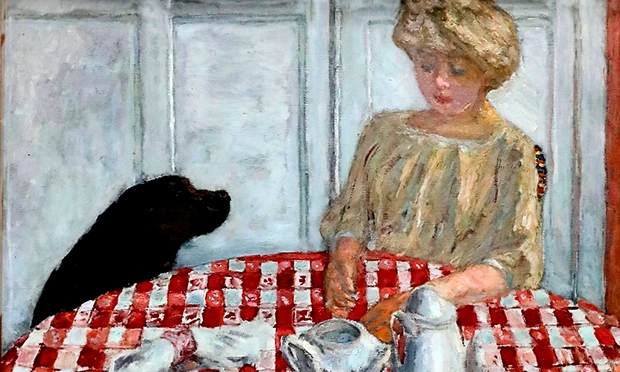‘Hazy renderings of a restrained gastronomy’

Bonnard’s still life paintings ‘capture ambiguous dishes of indefinable deliciousness’
Just as the Impressionists discarded conventional art, Pierre Bonnard’s paintings of domestic interiors seem to overturn the tyrannies of classical French cuisine and make us look at food in a new way.
Bonnard captures hazy moments of evanescent aromas and flickering light on ambiguous dishes of indefinable deliciousness.
Images of his wife Marthe, wallowing in a bathtub of shimmering water, convey the same impression of the instant moment, of changing light.
In fact, both the dinner table and the bathtub are the result of countless preliminary sketches and drawings, watercolours and oils.
The myth that Marthe was a sort of weirdo, compulsively washing and scrubbing herself, originates in this multiplicity of sketches that Bonnard made of her in the tub.

Bonnard’s La Grande Baignoire
Looking closer at these, it is a bit disconcerting to see that there are no taps. This means someone must have toiled away transporting gallons of water at just the right temperature, a luxury treasured as much as foie gras or a fragrant tarte aux pommes.
While there is nothing erotic or suggestive about Marthe in the tub, there is little gastronomy in these atmosperic paintings, which happen to have food in them.
It’s enjoyable to compare Bonnard’s work with the painstakingly accurate still-lifes of Luis Egidio Meléndez, which we’ve looked at in past columns. The Spanish artist was deliberately focused with passionate accuracy on a recipe or a complete meal.
In the 18th century, when aristocratic Europe was in thrall to French fashions in most things, the Spanish royal family were commissioning images of these traditional national dishes.
For Bonnard, it was not a matter of overthrowing conventions as much as finding a new way of using food to convey feelings about light and colour.
He used to say that his bowls and dishes and pots and pans all required years of use and familiarity before he could paint them adequately.
So much for capturing the fleeting moment.
We can only admire the complexity of his approach, how the luminous shapes respond to the bouncing light.

Animals often featured in Bonnard’s domestic scenes
The small animals in his paintings must have seemed like the teapots and bowls of fruit – familiar participants in somewhat casual meals.
One of Bonnard’s patrons over the years was Gertude Stein, even though her love of food was not reflected in her art collection, except perhaps for Cezanne’s boring geometric apples.
Her companion, Alice B. Toklas, wrote a splendid cookery book, in which their love of the rich extravagance of some aspects of French cuisine is combined with anecdotes of foodie friends and meals enjoyed on their travels.
One of these included a rice pudding – nothing like American food today – that saw a small amount of rice cooked and baked in a shatteringly rich custard, perfumed with vanilla, which included five egg yolks, and much whipped cream and beaten egg whites.
There is something heartwarming in Bonnard’s hazy renderings of his more restrained gastronomy, and the affectionate portrayal of little animals and bowls of fruit alongside what look like casual meals and snacks.
